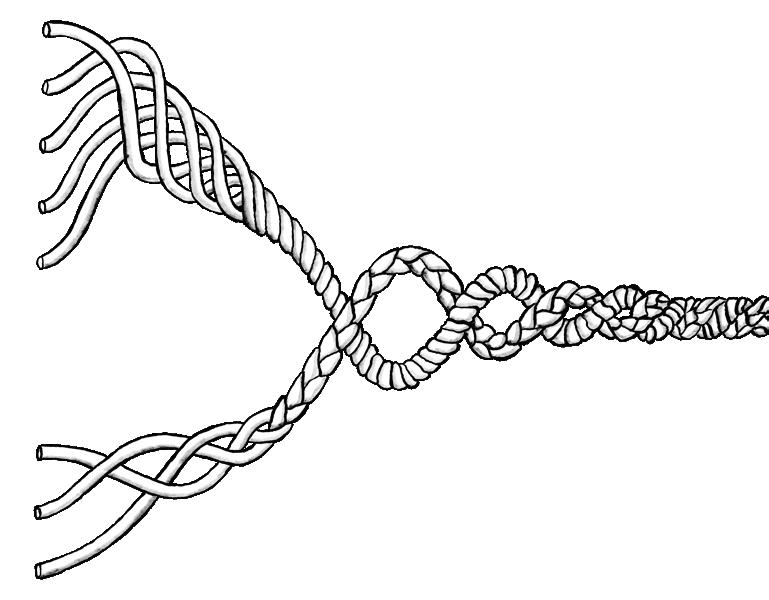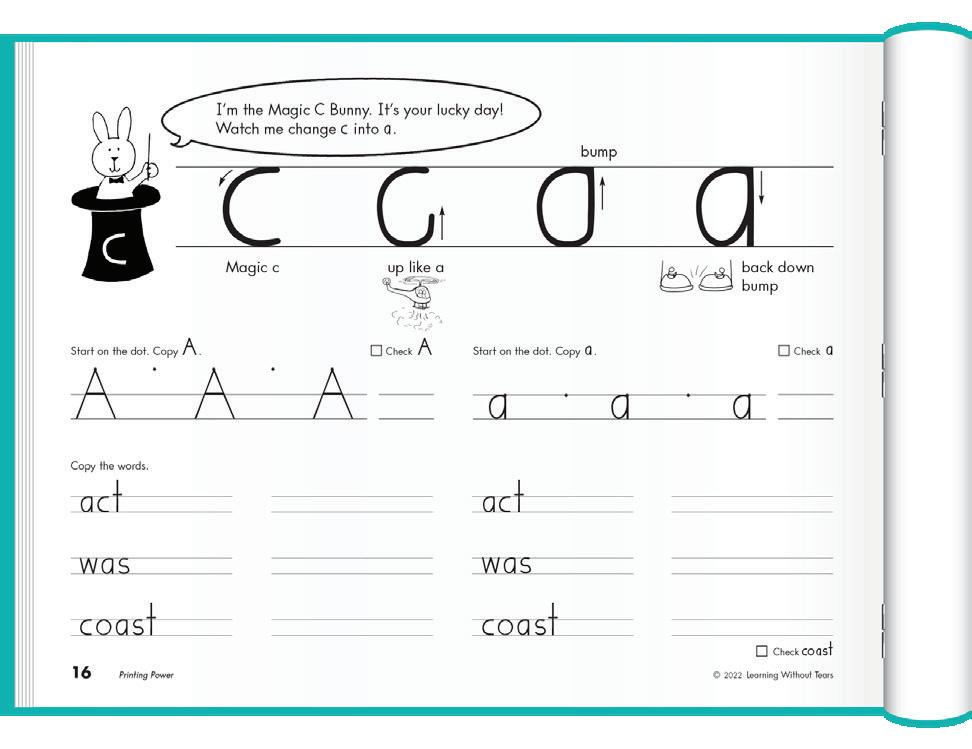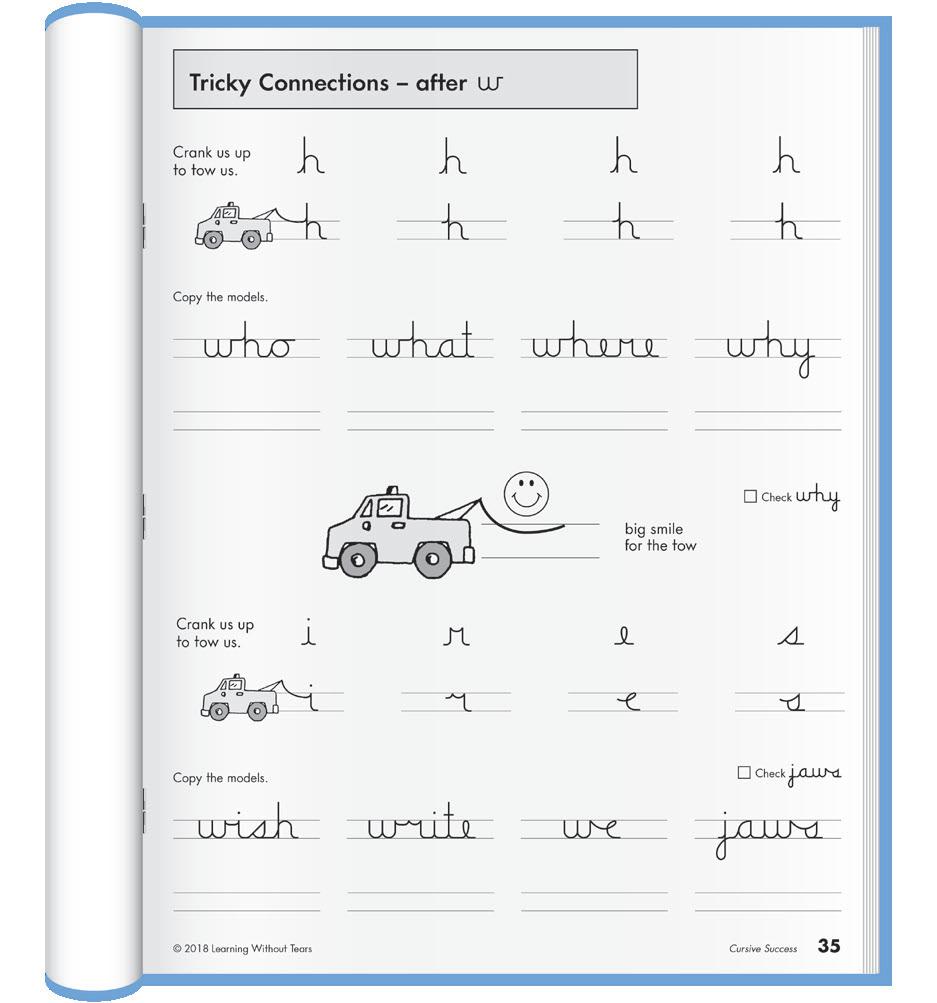HOW HANDWRITING WITHOUT TEARS ® ALIGNS TO THE SCIENCE OF READING
Handwriting is one of the foundational skills that leads students toward automatic word recognition.
It falls in the bottom, skills portion of Scarborough’s rope. As students form letters, they are solidifying the alphabetic principle. They need to be able to retrieve the symbol for the sound automatically, so as students practice in Handwriting Without Tears (HWT), they are learning to transfer that knowledge.

In HWT, students learn to write their names and write letters beyond their names, skills which are markers of emergent literacy skills, and lead to reading. As students develop skills in HWT, their working memory is freed up to focus on the sounds and meanings of words. This ultimately prepares students to be readers.
Writing by hand teaches letter formation, letter recognition, knowledge of print, and sound-letter correspondences (Puranik et al., 2011; Puranik & Al Otaiba, 2012).
It is important to know the shapes of individual letters to read, and handwriting aids in that recognition (Adams, 1990).
The fine motor act of producing a word by hand results in these tactile sensations in the brain that link letters into a simple written word. (Berninger, et al, 2009).
Steve Graham’s research showed that 90% of firstthrough third-grade teachers surveyed thought that handwriting was important but only 12% felt that they had adequate preparation to teach handwriting. (Cutler & Graham, 2008) Case-Smith found the same result from teachers. In addition, Case-Smith research found that literacy scores were significantly higher for students with good handwriting than those with poor handwriting (Cornhill & Case-Smith, 1996).
Students who have explicit instruction in handwriting improve at writing and the ease with which they can document their ideas in print (Graham, 2020).
Writing by hand occupies 30–60% of a child’s school day (Stewart, 1992; Simner, 1998; Feder and Majnemer, 2007; Sassoon, 2007) and correlates with self-esteem and future academic success as literate individuals.
Children with deficient handwriting, which are 10–30% of children (Karlsdottir and Stefansson, 2002), take longer to complete writing tasks such as homework. This adds to the difficulty of schoolwork and may result in oppositional attitudes toward writing assignments. These negative attitudes can generate problems both at school and at home (Racine et al., 2008).
Crucially, handwriting performance also links with other language related skills. There is a key tie between reading and learning to write. Studies have shown that learning to write can improve letter perception (Longcamp et al., 2005), pseudoletter learning (Richards et al., 2011), and word reading (Berninger et al., 2004, 2006; James and Engelhardt, 2012).
Children with learning disabilities such as developmental dyslexia, a specific reading impairment that is believed to have phonological deficits at its core, often display writing difficulties (O’Hare and Khalid, 2002; Giminez et al, 2014).
References
Adams, M. (1990). Beginning to read: Thinking and learning about print. Cambridge, MA: MIT Press
Cornhill, H., & Case-Smith, J. (1996) Factors that relate to good and poor handwriting. American Journal of Occupational Therapy, Vol.50, 732-739
Giminez, et al. (2014) Neuroimaging correlates of handwriting quality as children learn to read and write. Frontiers in Human Neuroscience, March 2014.
Berninger, V. W., Abbott, R. D., Augsburger, A., & Garcia, N. (2009). Comparison of Pen and Keyboard Transcription Modes in Children with and without Learning Disabilities. Learning Disability Quarterly, 32(3), 123–141.
Cutler, L., & Graham, S. (2008). Primary grade writing instruction: A national survey. Journal of Educational Psychology, 100(4), 907–919. Graham, S. (2020). The sciences of reading and writing must become more fully integrated. Reading Research Quarterly, 55, S35-S44. Karlsdottir R, Stefansson T. Problems in developing functional handwriting. Percept Mot Skills. 2002 Apr;94(2):623-62. doi: 10.2466/pms.2002.94.2.623. PMID: 12027360.
Longcamp, M., Zerbato-Poudou, M. T., & Velay, J. L. (2005). The influence of writing practice on letter recognition in preschool children: A comparison between handwriting and typing. Acta psychologica, 119(1), 67-79.


Puranik, C. S., & Al Otaiba, S. (2012). Examining the contribution of handwriting and spelling to written expression in kindergarten children. Reading and Writing, 25(7), 1523–1546.
Puranik, C. S., Lonigan, C. J., & Kim, Y. S. (2011). Contributions of emergent literacy skills to name writing, letter writing, and spelling in preschool children. Early childhood research quarterly, 26(4), 465-474. Racine, M. B., Majnemer, A., Shevell, M., & Snider, L. (2008). Handwriting performance in children with attention deficit hyperactivity disorder (ADHD). Journal of Child Neurology, 23(4), 399-406.
